
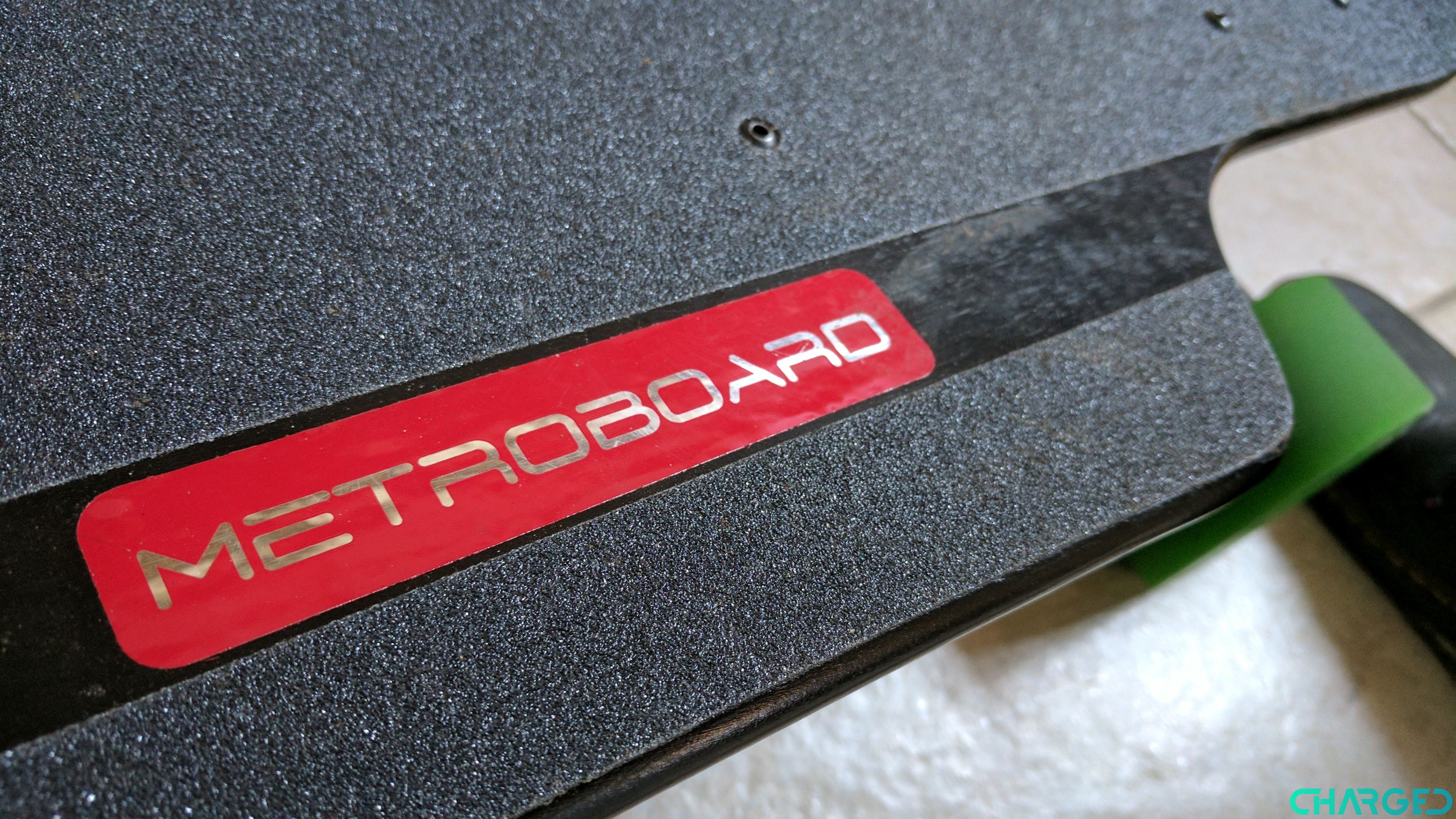
The electric skateboard industry has been growing pretty rapidly over the last couple of years, being popularized by larger companies like Boosted Board and InBoard. While many of these companies offer very similar features in packages that resemble one another almost to a tee, there are a couple more experimental companies out there who are more interested in pushing the boundaries of what is possible with modern transportation.
Metroboard is one of these companies.
The company sent me their premiere “Dual Drive” 41″ board to review, and it is clear that this thing is all about power. While it may not have many of the more refined looks and packing of more established and popularized companies, what it lacks it makes up in sheer capacity and speed. But do these bonuses warrant the hefty $1,900 price tag that the company is asking for the product?
This is the Metroboard Dual Drive electric longboard review.
Table of Contents
Metroboard Dual Drive: Body

The Metroboard Dual Drive E-Longboard features a body very similar to that of more traditional longboards on the market, appearing nearly symmetrical from front to back. The model the company sent me is technically the “Stealth Edition”, meaning the top of the board as well as the battery casing are coated in stark black paint. There isn’t much branding visible on the board at all, unlike some other options we’ve seen from the likes of companies like Swagtron. Instead, you get a relatively small but recognizable logo on the side of the battery and small section of the deck, with a red background and white lettering.
The deck of the board is 41″ long, and is made of seven plies of Canadian Maple. This deck feels very sturdy when riding, flexing enough to not throw you off but certainly sturdier than cheaper models available on the market. It is possible that this is due to the large battery attached to the bottom of the board, but overall the wood feels good. I was able to ride over smaller obstacles without much issue, though the large size of the battery makes it so you have to be especially aware of the areas you are riding over.
The grip tape on this board was good for keeping my feet rooted, but I did notice it start to come off fairly quickly. This happened mostly near the beginning of my testing of the unit however and didn’t seem to be much of an issue after riding it for a while, so it is possible there was just some loose tape that came off of my particular model.
Unfortunately, this board does not include any special methods of towing or carrying the board past just holding it on its side. This is pretty frustrating, because this board weighs 24 pounds. Since the grip tape is so aggressively grippy, it will shred up your hands or clothes, so carry this thing with caution. Though the goal is obviously to not have to carry this thing at all, you’re going to have to carry it as least a short distance once you get to where you’re going. This makes it very difficult to recommend taking this board to somewhere like a grocery store, unless you have a secure place to lock it up while you are inside.

There is a large switch on the side of the battery that is used to turn the board on, and it makes a very loud series of beeps when booted up. The number of beeps tells you the battery capacity: 4 for 75-100%, 3 for 50-75%, 2 for 25-50%, and 1 for 0-25%. This is helpful to know that your board is working correctly, but doesn’t exactly play well to the “stealth” branding of the board.
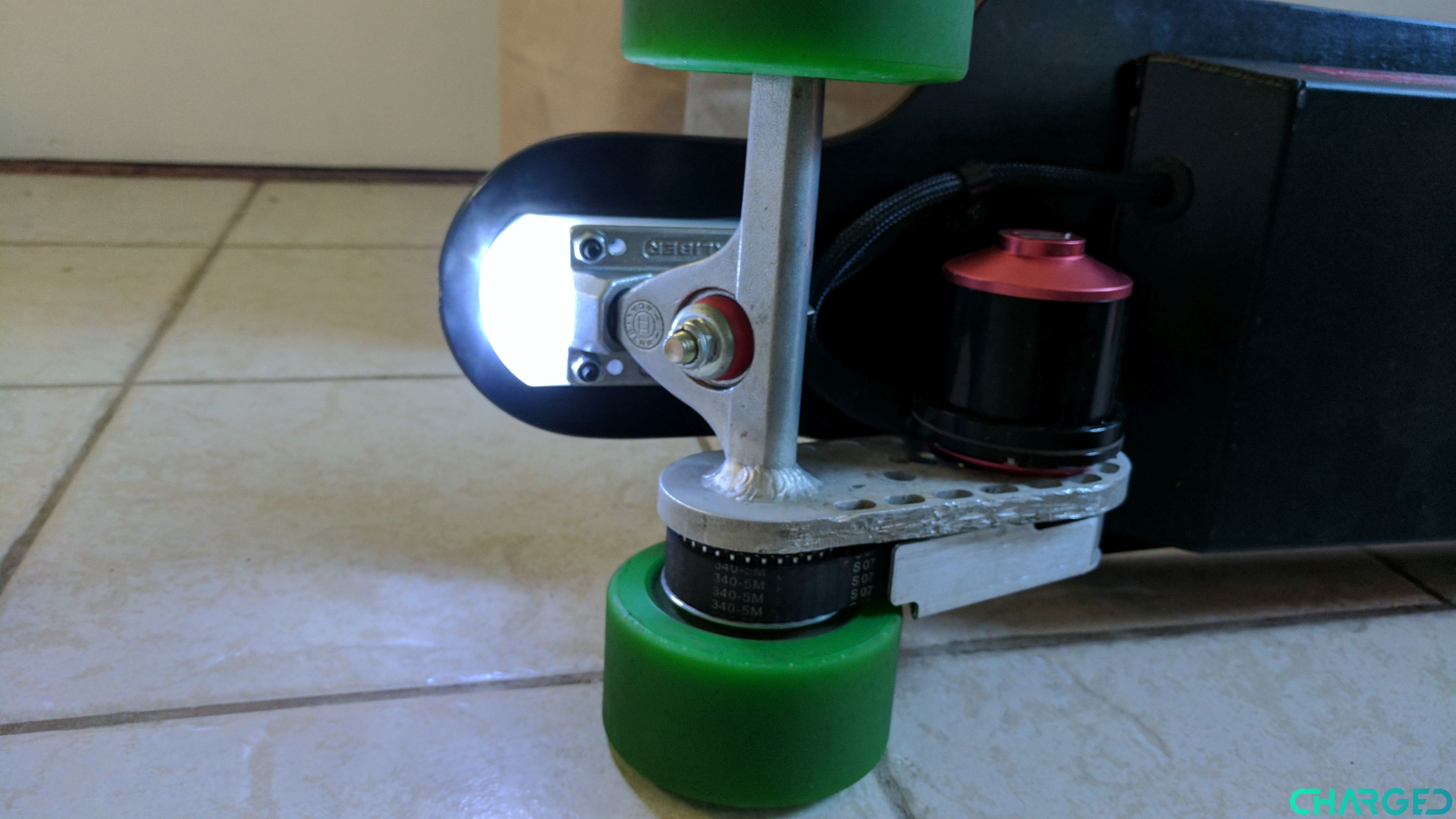
There are two large lights on the front and back of the board that ignite when you turn it on as well. The front light is a large white light that works a bit like a headlight, and helps cars and pedestrians to let them know you are coming when it is dark.
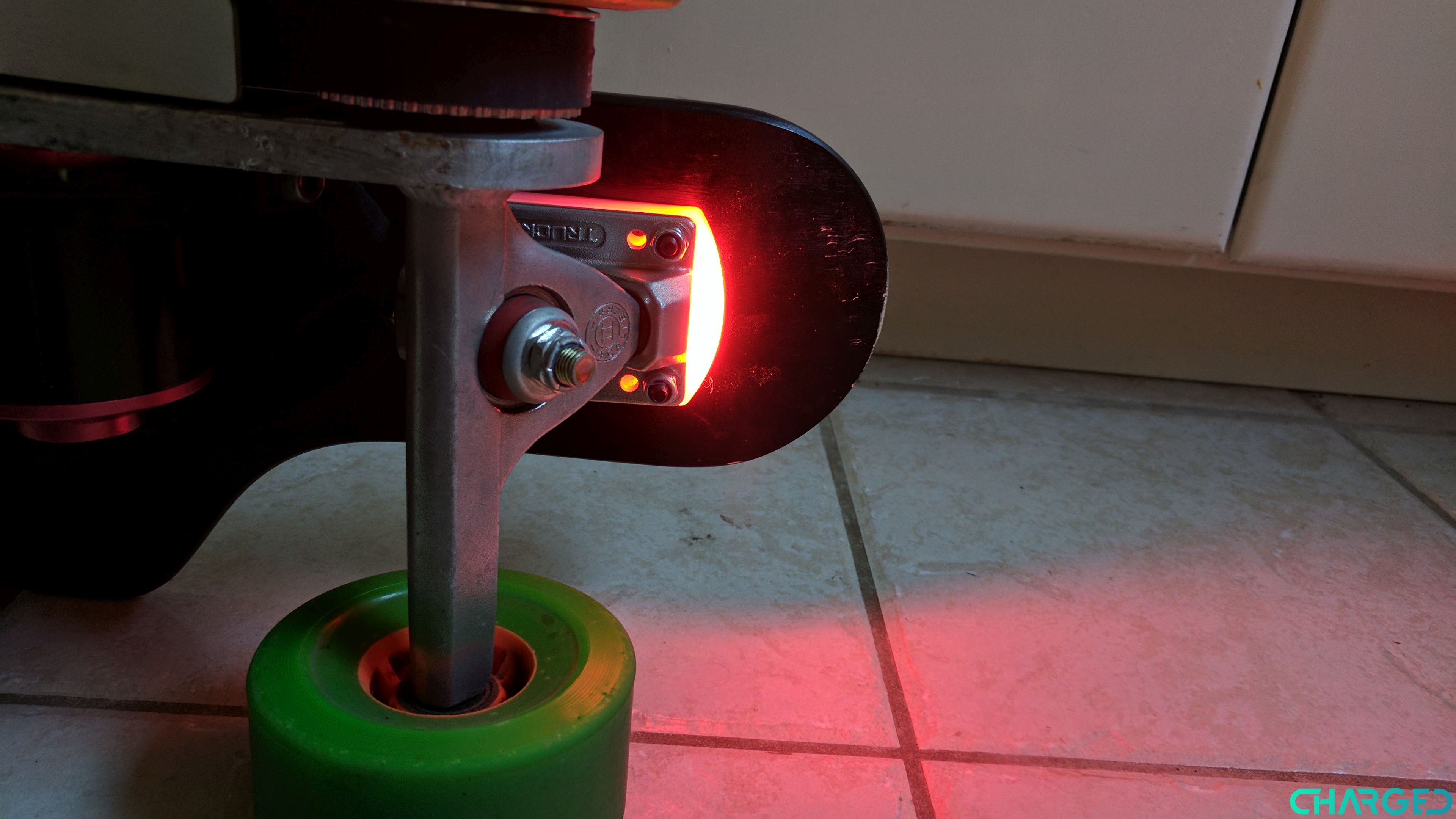
The tail light is red in classic fashion, and while it doesn’t get brighter when braking like a car, it is still extremely visible and useful for those that need to watch out for you on the road.
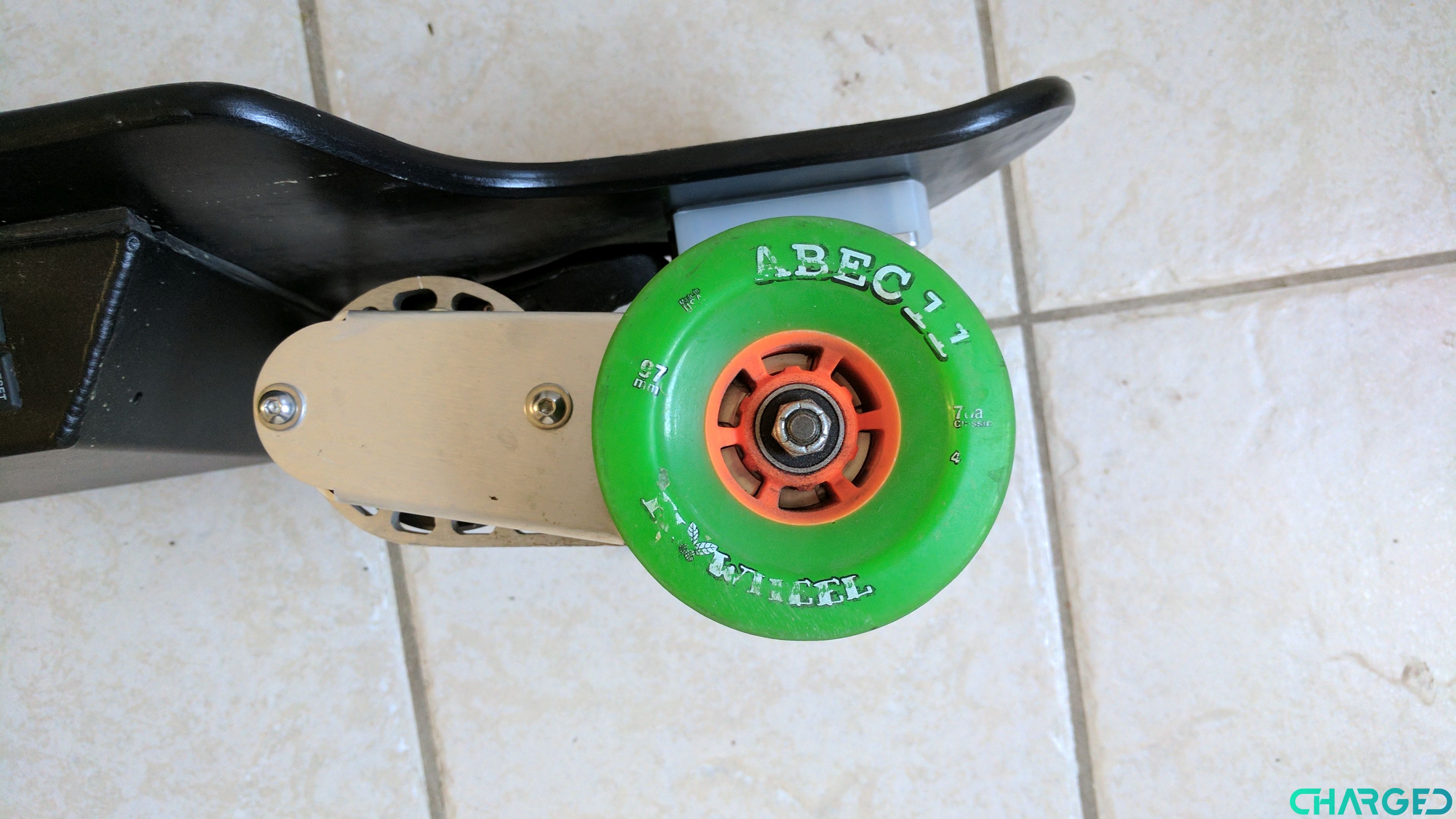
If you know about skateboard wheels, these things are 97 mm GENUINE ABEC-11 BRAND Super High Rebound GREEN (78A) Wheels. The company says they have a rebound of over 80%, meaning you shouldn’t have much issue going over curbs and small objects, though I did have some issues treading over Sweet Gum Tree seeds (those spiky circular balls on the sidewalk). They knocked me off the board a couple of times, but you should probably be trying to avoid anything too large anyways.
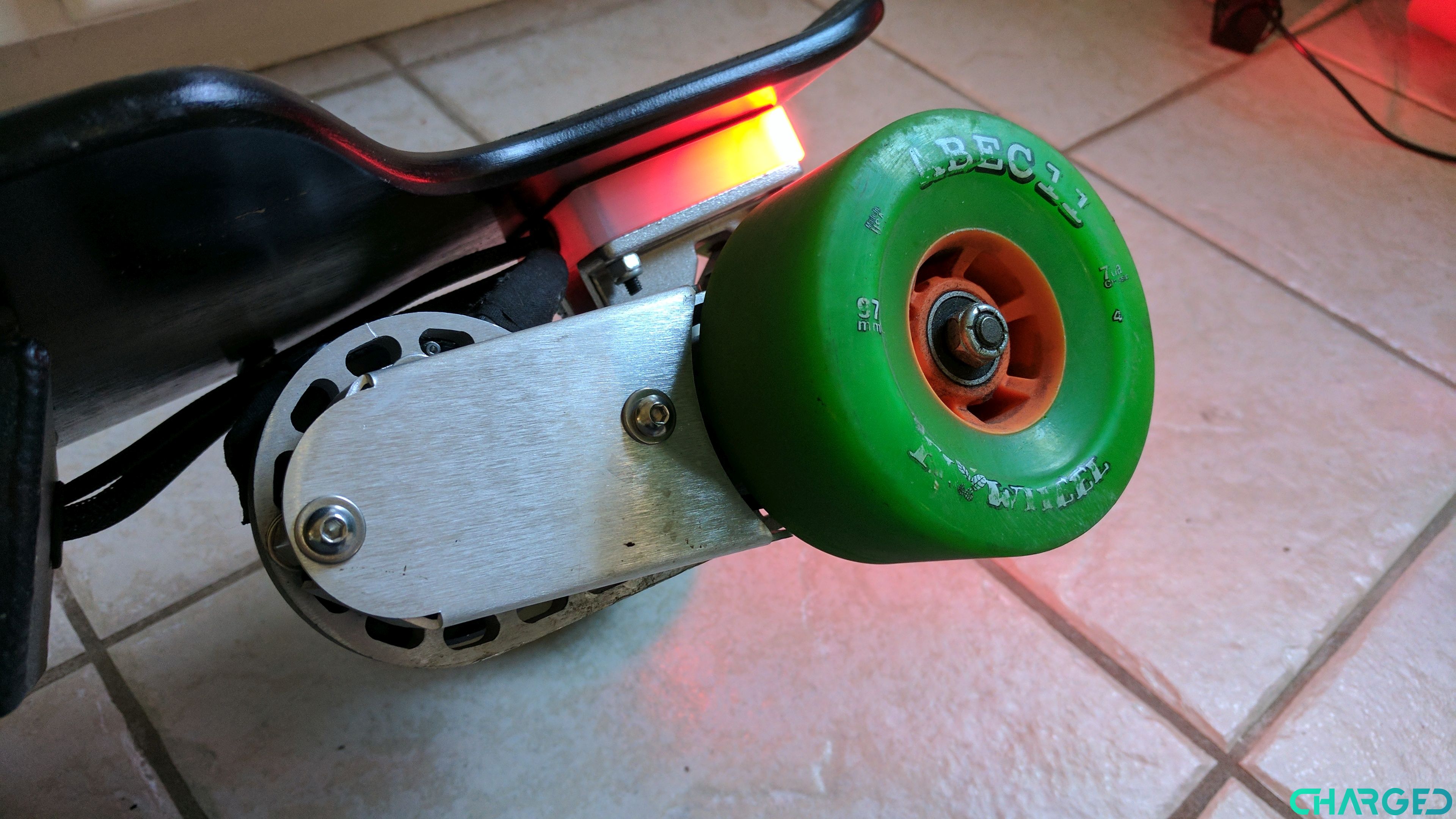
The trucks on this board are Caliber II 10” 50° Reverse Kingpin Trucks, and are really very durable. They look like extremely solid pieces of metal, and feel like something made specially in a metal shop. I usually carried the board by holding on to these trucks as they swivel well and can hold the board solidly in place, and this also avoids tearing up your hands on the grip tape.
Metroboard Dual Drive: Battery and motors
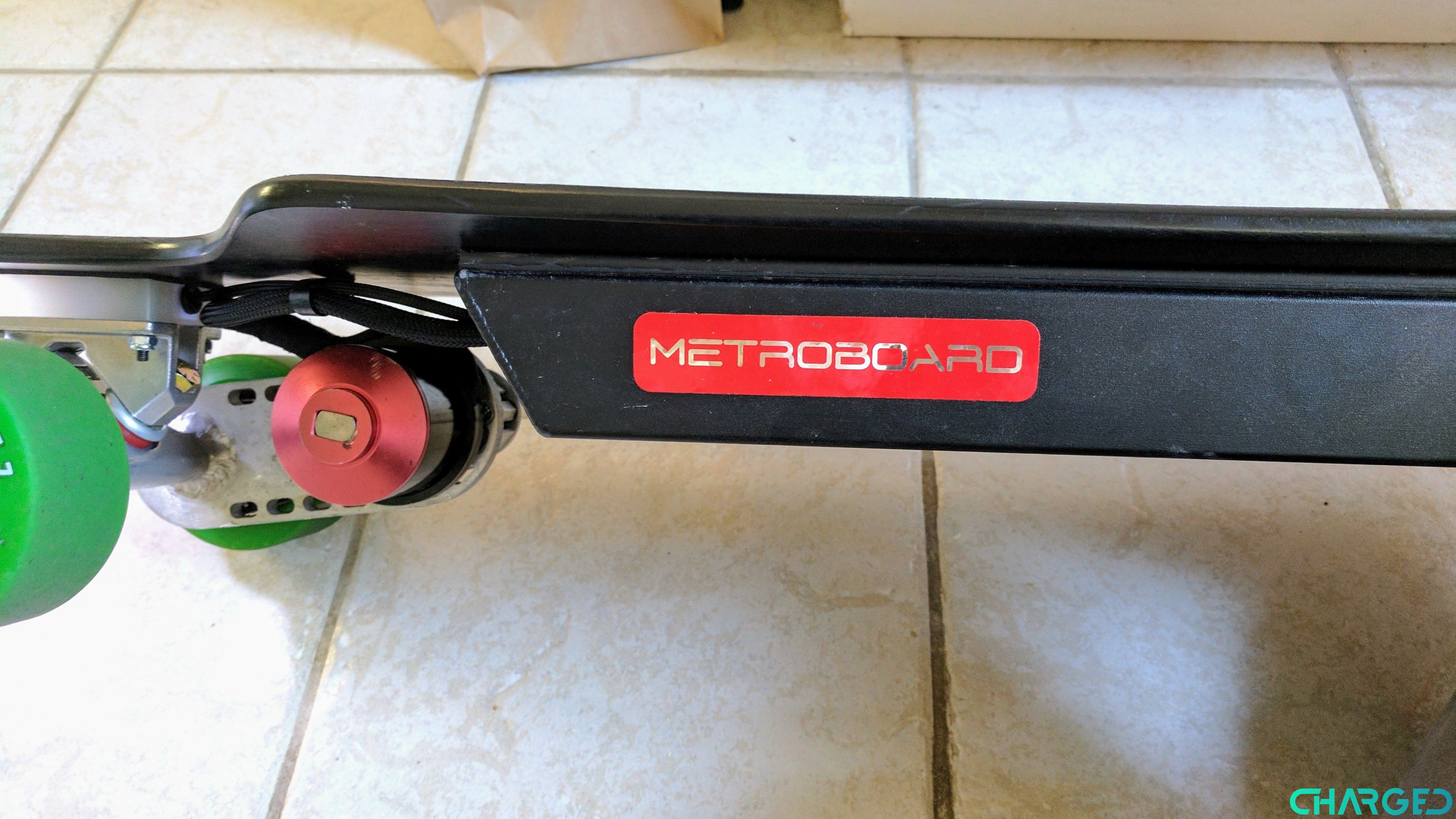
Metroboard is using a special 36V 11AH lithium-ion battery which can apparently deliver a 25 mile range. I didn’t really get close to this limit considering I was riding around the city most of the time and would plug in the board when I got home, but there were multiple instances where I did not plug in the board for a few days and still didn’t feel that it was running low on power at all. The battery in this thing is also physically huge. It juts out pretty significantly from the bottom of the board, and makes it difficult to go over any small curbs without the fear of scratching it up. That said, there is a very solid metallic casing holding the battery secure, so you shouldn’t have to worry about accidentally puncturing this over time. The included charger can also charge the battery from empty to full in just 2.5 hours, which is very fast for something that has this much range.
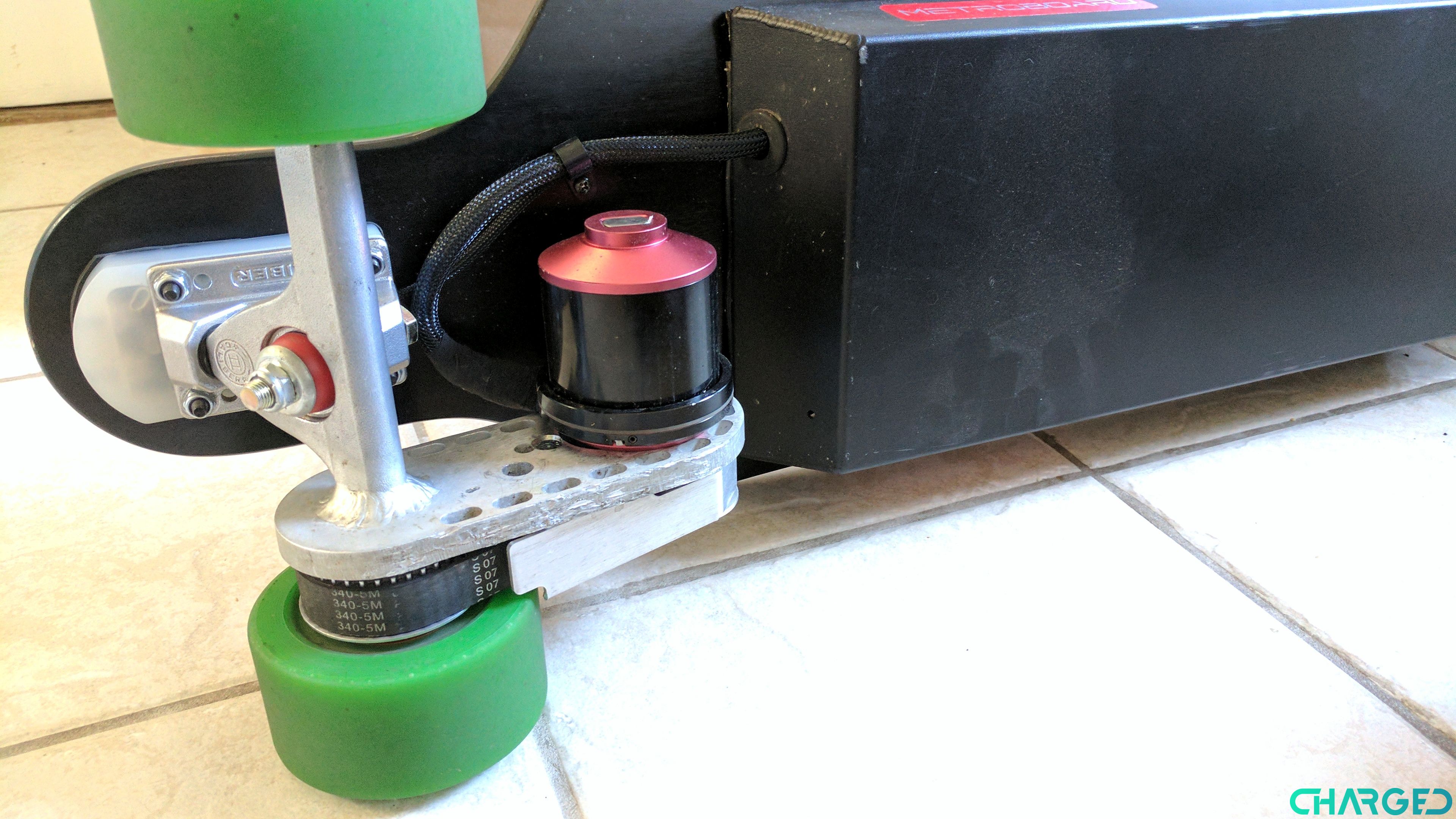
The board uses motors at the front and back of the board to drive the wheels, and turns them with an 18mm Timing Belt. These belts are pretty darn loud, so people will absolutely know you’re riding by them, but don’t expect to get around without anyone noticing. While I didn’t find the sound to be a huge issue in particular, is was a bit annoying compared to other options which can ride much more silently and exist much more like traditional longboards.
Metroboard Dual Drive: Riding experience
The riding experience felt very stable on this board. Once you get going, it coasts a lot better than other options I’ve tried, and barely need the motors when heading down inclines. You hold speed pretty decently, though it won’t coast quite as well as a regular longboard, likely due to its awkward weight distribution and belts that will be turning during this time.
I found the acceleration curve of the Metroboard to be a bit harsh at first, but this can be tweaked to a number of different settings on the controller, which I will talk about later. Part of this is also due to the dual-drive motors present on the device, which are pushing you forward from the front and back of the board. A lot of the harshness of the curve comes down to how comfortable you feel on a skateboard. I’ve been testing this thing for about four weeks now, and the beginning of my tests found me being tossed off and unbalanced, but now I feel extremely comfortable accelerating more precisely and at higher speeds.
Can’t ride a real Skateboard? Try the Skate City Android game
Metroboard Dual Drive: Controller
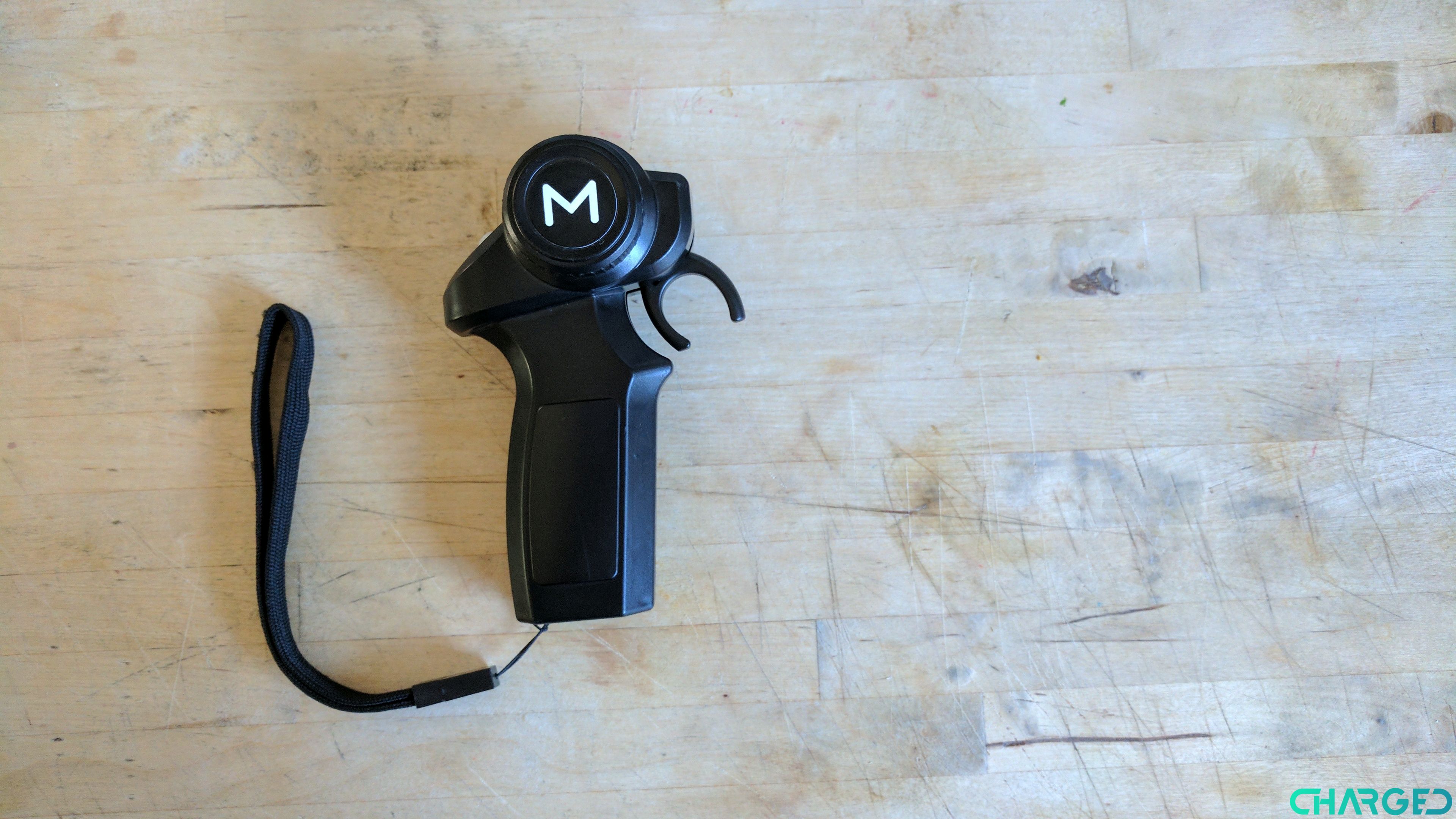
There are both things I love and things I hate about this controller. It essentially looks like and functions like an RC car remote, with a finger trigger and holster-shaped grip. It uses replaceable batteries so you won’t need to charge it, but there isn’t really a status indicator to let you know just how much charge you have remaining. While it is nice that this will last quite a while without the need to charge the thing up so often, it would be incredibly frustrating and potentially dangerous for the controller to die while you were on a ride.
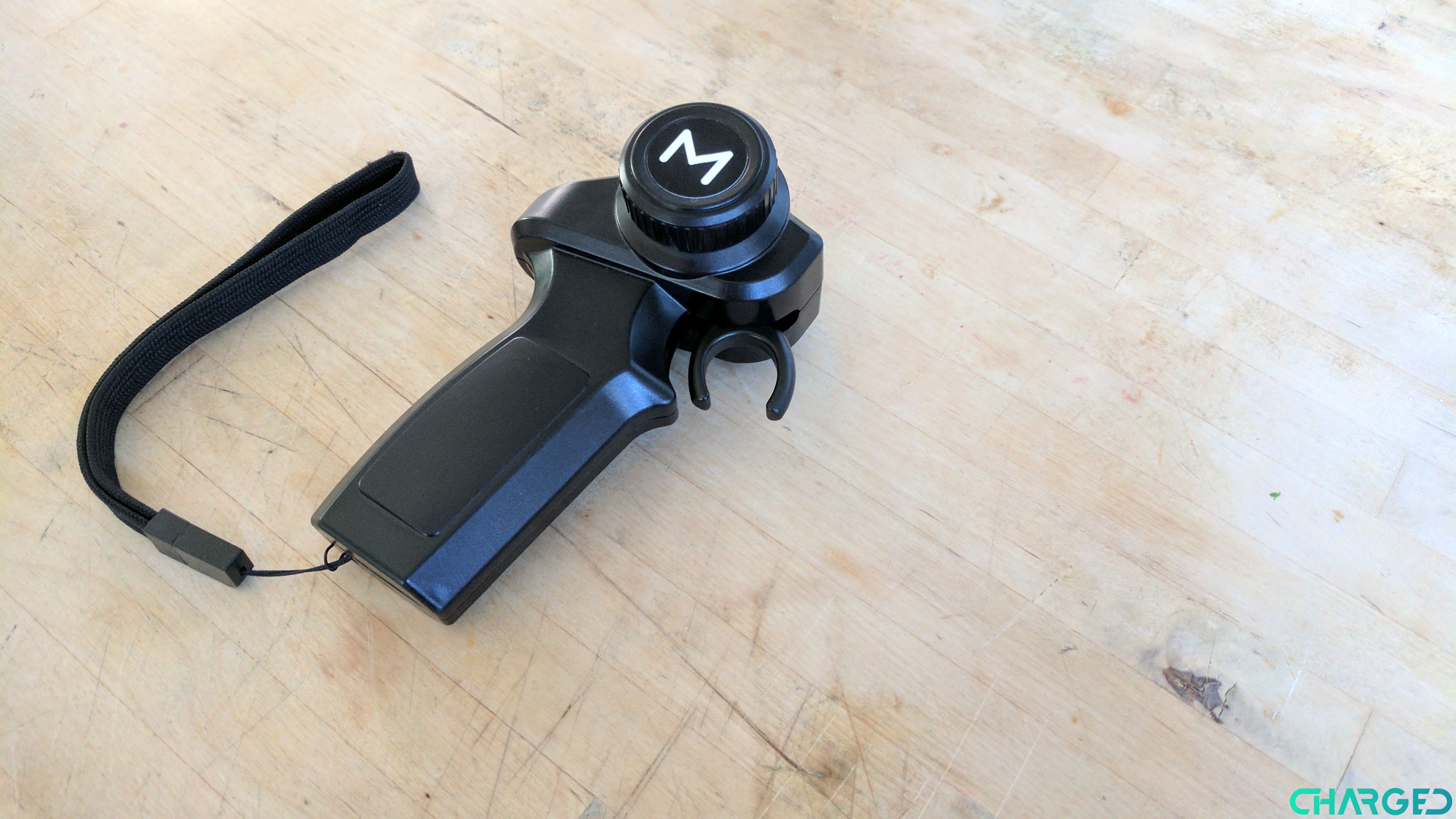
The trigger used to accelerate the board seems to have a pretty high movement floor. By this I mean that you have to pull down a decent amount before it starts moving. There are both positives and negatives to this, as you are not quite sure when the board will begin to budge, but it should help the board to not start moving while you are simply holding the controller. Once you pass this threshold however, the acceleration gradient works very nicely. It definitely takes some getting used to to be able to know how much pressure to apply to this, but once you get the hang of it you should be smooth sailing.
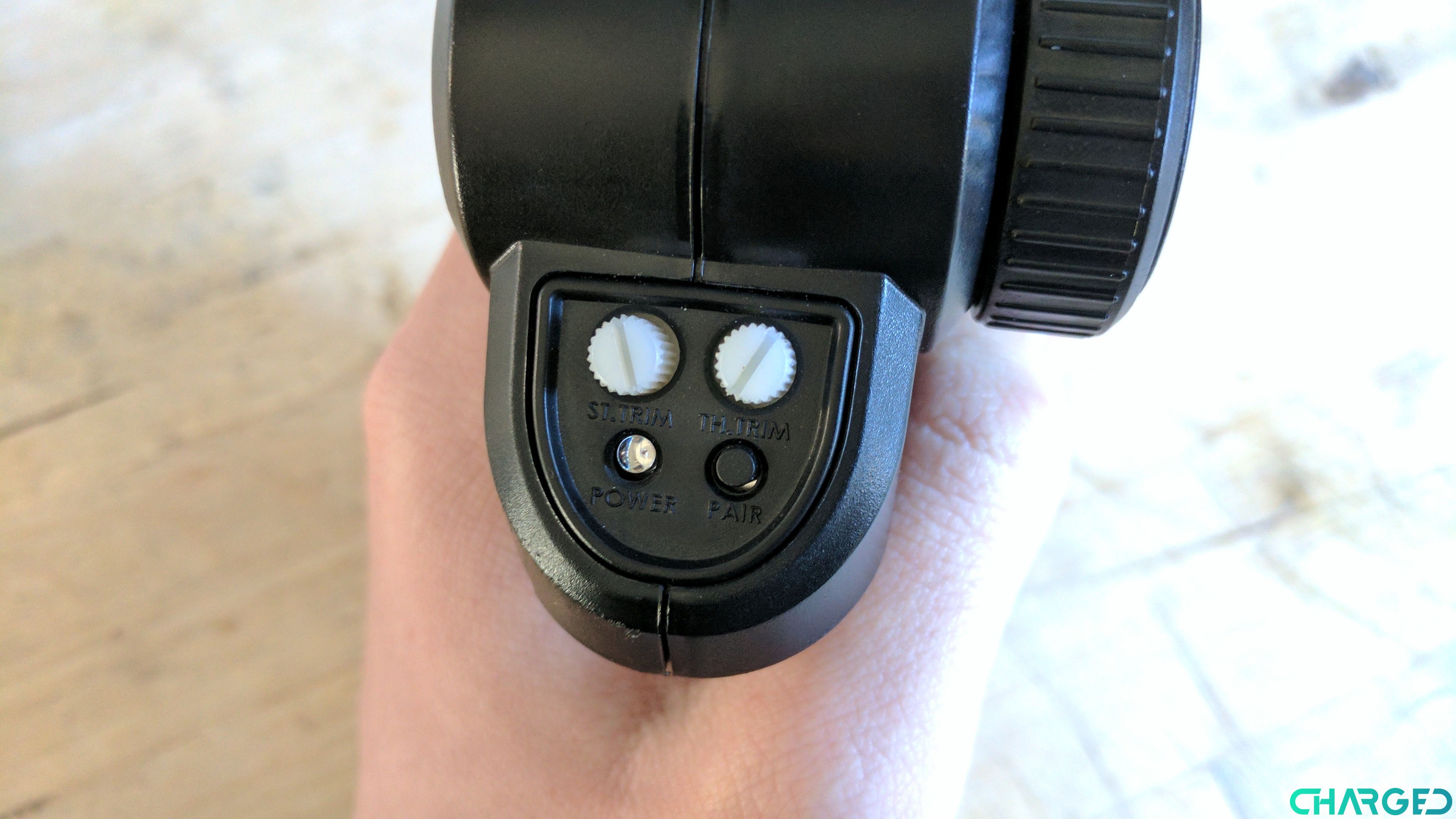
There is a power indicator light letting you know that the remote is on and also a small button that allows you to pair it with your board, though it should come pre-synced. Two dials above these buttons are used to adjust the acceleration curve, from beginner to more advanced. These are a bit hard to understand and you’re going to have to use a flat-head screwdriver to twist them correctly, but we would highly recommend working on a setting that works for you before riding.
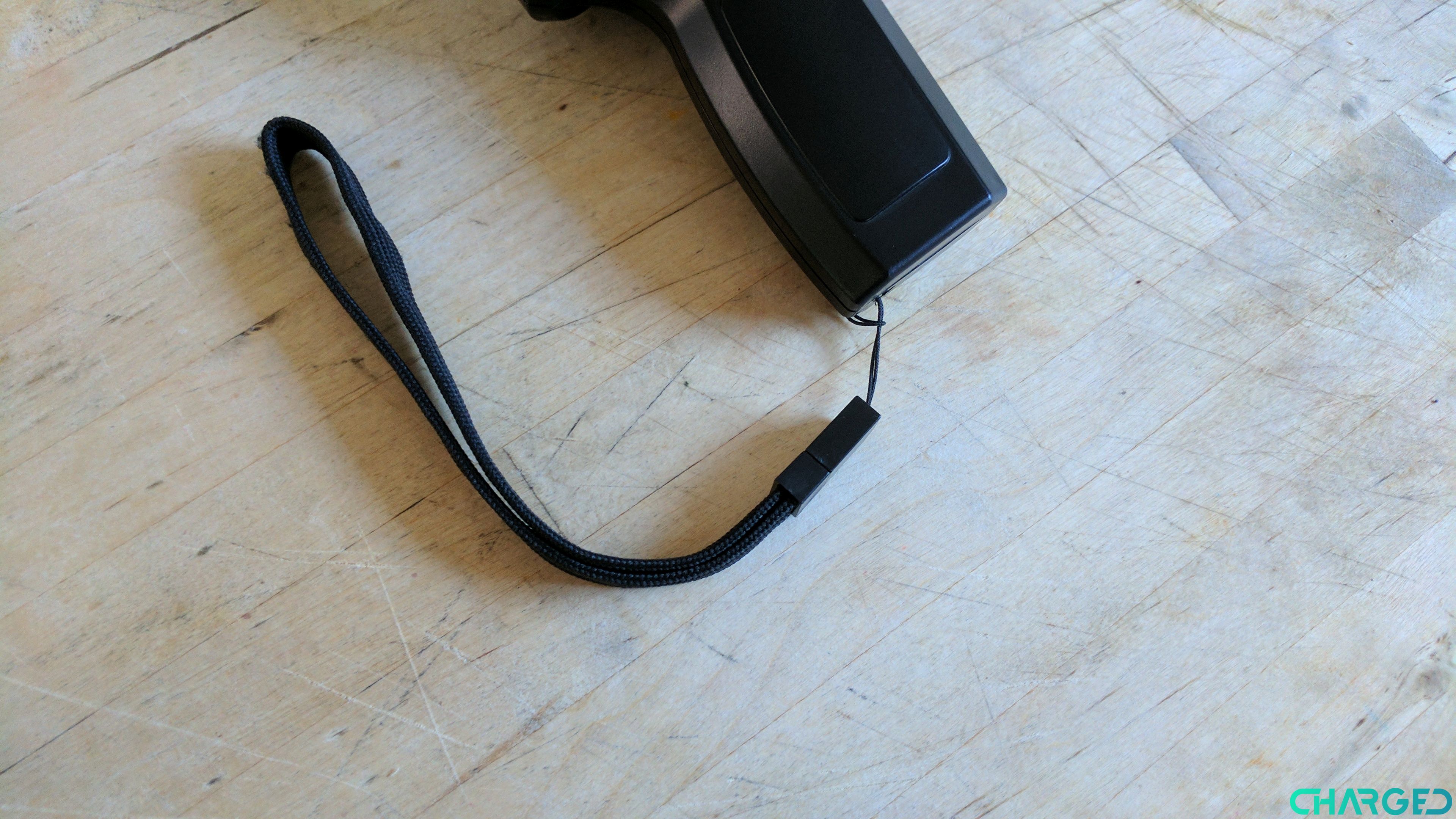
There is also a wrist strap to help you keep the controller in your hand, but the controller itself feels pretty fragile, so we would be hard-pressed to say that it would survive very well if you landed on it with the full force of your body. That said, it is probably better than dropping it in the street and not being able to control your board, so we would recommend using this feature.
Wrap-up
The Metroboard Dual Drive electric skateboard has a lot to offer, but the biggest feature they are touting with this thing is sheer power. With two separate motors and a maximum speed of 21 miles per hour, you’re probably going to be flying through the streets a lot quicker than the competition. That isn’t to say it doesn’t have its issues. The controller feels pretty cheap though it is well designed, and the board’s sheer weight and lack of any sort of handle makes this thing hard to bring to places like the grocery store.
The weight is justified however. With a maximum range of 25 miles and components that feel like they came straight out of a metal shop, this thing is going to be as sturdy as they come. That said, it did still feel like a prototype. There wasn’t a lot of packaging that let you know this was a consumer product, and some minor details like the sticker on the remote make it feel a bit like a jerry-rigged science project.
I did thoroughly enjoy my time with the Dual Drive Metroboard Stealth, however. It’s a better shape than other boards I’ve tried and feels better to operate, though it can be a bit loud at times. Would I buy one for $1900? Probably not, but I’m not a native skateboarder, either. This is a board for the big boys, not someone who is relatively new to the concept like myself. If you’ve been messing around will smaller and less powerful electric options for a while now and really want to upgrade to something that is more powerful with a better range, this will certainly be a looker, assuming that you can justify the high price tag that the company is offering.